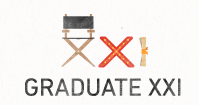LatinaLista — The prospect of a future where 50 percent of the population have never graduated from high school sounds almost like a sci-fi thriller, except there’s no need to wait for the future — it’s happening now.
In Latin America, nearly half of the students do not finish high school. It’s actually a trend that US educators see replicating this side of the border. According to a new study written by Andrew Sun of Boston’s Northeastern University, foreign-born Latinos appear to have the highest school dropout rates in the United States.
In fairness, there could be a myriad of reasons for this dropout rate stemming from the students’ undocumented status, if they are undocumented. However, given President Obama’s approval for deferred action for those undocumented students who qualify, the dropout rate should be lower among these students. Unless it’s less about legal status and more about an issue that ranks as the number one reason for the majority of out-of-school Latin American youth to call it quits on education early — no interest.
Unfortunately, in Latin America, interest, or lack of it, is only one challenge. The other challenges forcing Latin American youth from receiving an education that will make a difference in their lives and for their countries are more systemic where the divide between rich and poor, indigenous and fair, disabled and able-bodied are as great and discriminating as they ever were.
This academic disparity among Latin American youth is sounding the alarm of an educational crisis and the Inter-American Development Bank (IDB) is answering it with the launch of a new initiative focused on raising public awareness of the high school dropout problem in Latin America and, at the same time, seeking ideas on what it will take to keep more young people in school.
Dubbed GRADUATE XXI, the English/Spanish site features blogs, videos, educational materials and the most recent dropout data. By featuring data that reveals:
- In every single Latin American country, the gap between rich and poor students persists.
- Over half of youth in rural areas do not complete 9 years of school.
- More than 40 percent of indigenous youth between the ages of 12 and 17 are not in school.
- It is estimated that only 20 percent to 30 percent of all children and youth with disabilities in the region attend school; most of them never finish high school.
the IDB hopes more people will be drawn to act, react and get involved in finding a solution. To help motivate people to think about the issue, the site is sponsoring a series of ten online contests.
Each contest will culminate in the announcement of a winning idea and the screening of a short film on the contest topic. The first online contest, launched (today) December 10, will center on barriers faced by students with disabilities and will solicit ideas to make education more inclusive and accessible. Hugo, the first short film by award-winning director Mariana Chenillo, will premiere at the close of the first contest at the end of January.
In addition to opening the issue up to a broader audience, the IDB is also working with Latin American governments to close the gaps in access and work on improving the quality of secondary education so that more kids can go to school, see its relevance to their lives and their future job prospects and drill home the point to current country leaders that a future where half of the workforce doesn’t get an education or training serves as a bleak prophecy for a sound economy.





